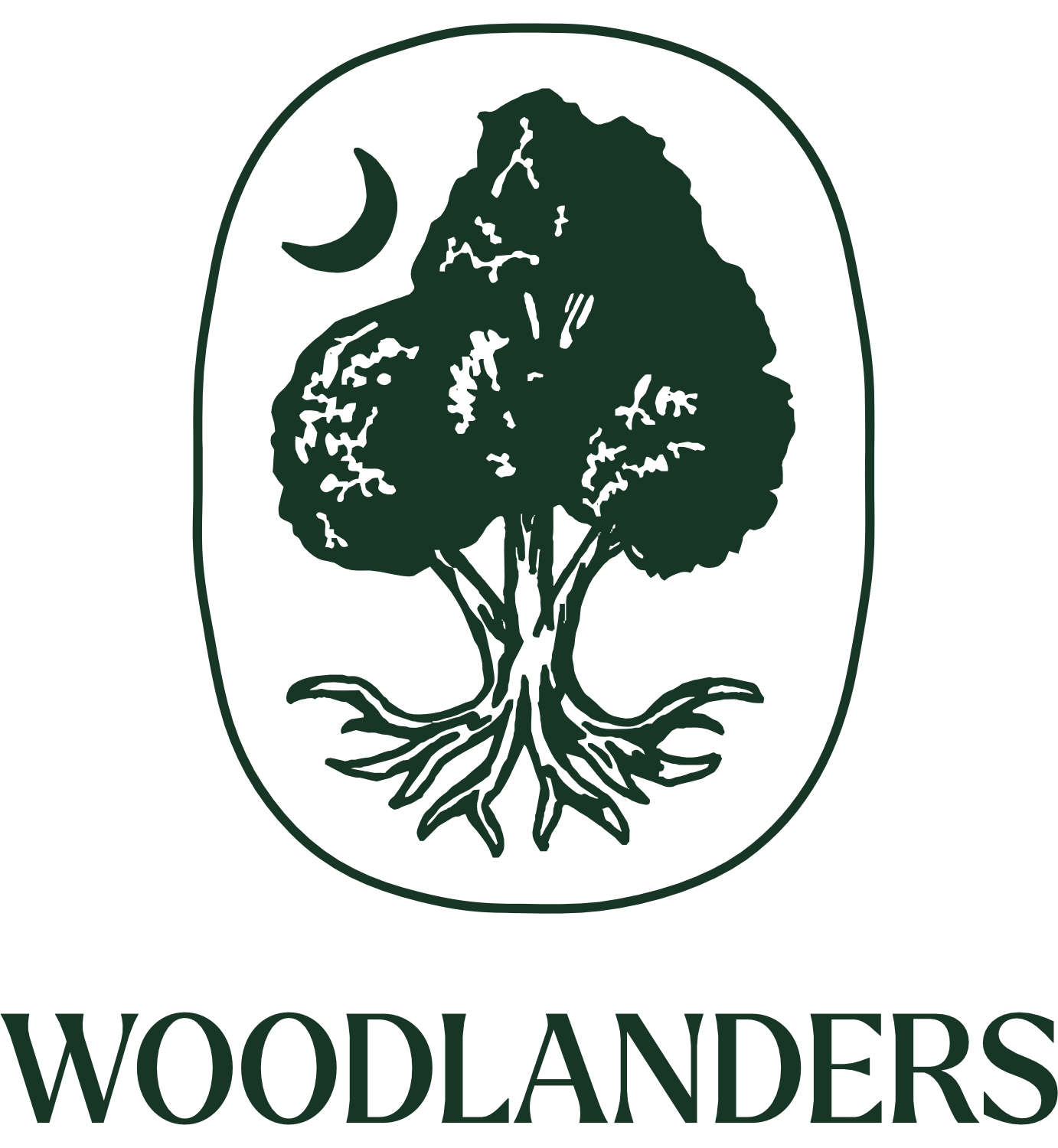
The willow oak (Quercus phellos) is not a tree that boasts. It does not flaunt ornate leaves or perfume the air with blossoms. It is not the stuff of children's fairy tales or romantic poetry. Yet there it stands: quiet, commanding, and vital—like the steadfast farmer who never leaves his land, or the family matriarch who remembers everything.
At Woodlanders, we cherish this tree not for its flamboyance, but for its constancy and contribution. The willow oak is a pillar of the Southern landscape and one of the most ecologically significant trees we offer.

A Willow in Oak's Clothing
To the casual observer, Quercus phellos may seem an oddity among oaks. Its long, slender leaves resemble those of the willow (Salix spp.), and its fine texture belies the massive frame it will one day carry. This leaf form, so unlike its broad-leafed cousins, gives the tree a grace that softens the sometimes ponderous look of other oaks.
Taxonomically, Quercus phellos belongs to the red oak group (Lobatae), bearing the classic traits: bristle-tipped leaves, acorns that mature over two seasons, and wood rich in tannins. The bark is tight and gray, maturing into shallow ridges and furrows, as if marked by the memory of floods and storms. It grows fast for an oak—two feet a year is not uncommon—and reaches 60 to 100 feet in height, its crown rounding with age into a shade-giving dome.
This is a tree that grows with quiet assurance, reaching toward the sky with disciplined restraint.
This growth rate and adaptability have made it a favorite in both natural and built environments. But its worth goes beyond convenience; this tree is stitched into the ecological and cultural fabric of the South.
The Tree of River Margins
The native range of Quercus phellos stretches across the Southeastern and Mid-Atlantic United States, thriving in lowlands, riverbanks, and bottomland hardwood forests. It is a tree shaped by water, and it returns the favor: stabilizing soil, filtering runoff, and creating refuge for countless species.
At Woodlanders, located in the sandy hills of Aiken, South Carolina, we have long known the value of such trees to our region. Their roots hold firm in flood-prone lands; their canopies provide dappled light that shelters understory flora; and their acorns—small, rounded, and produced annually—feed a wide array of wildlife, from squirrels and ducks to deer and wild turkeys.
You do not forget a Southern autumn punctuated by the tap of falling acorns on a tin roof.
This is no ordinary acorn crop. Willow oaks are prolific. Their mast years are symphonies of abundance, where the forest floor teems with nourishment. This rhythm of feast and fallow feeds not only the forest but the memory of place.
Cultural Companion of the South
Indigenous communities likely made subtle use of Quercus phellos. While its acorns are more bitter than those of the white oak group, they could be leached and consumed in times of need. Its wood, though not as prized as Quercus alba, offered utility: light enough to shape tools or construct shelters, and dense enough to burn steadily.
But it is in the colonial and postbellum South where the willow oak found its second calling. Farmers valued it for fencerows and shade. Town founders planted it along courthouse squares and boulevards, where its straight trunk and symmetrical form conveyed order and progress. In the New South's rise—when cities swelled and highways unfurled—Quercus phellos became a municipal favorite. Even today, it flanks main streets, parks, and campuses from Raleigh to Baton Rouge.
To walk beneath a colonnade of mature willow oaks is to feel the pulse of civic pride and natural rhythm beating in unison.
We at Woodlanders understand why. It is a tree that wears well with age. Unlike many fast growers, its wood becomes strong, its shape dignified. It is a tree you plant not just for yourself, but for your grandchildren.
Urban Champion
The horticultural strength of willow oak lies in its ability to bridge natural and built environments. It handles compacted soil, tolerates drought once established, and shrugs off urban pollutants. It transplants with greater ease than most oaks—a crucial trait for city planners and nursery growers alike.
Its roots, though aggressive in maturity, typically dive deep before spreading wide. This makes it a fine choice for large lawns, parks, and even parking lot medians—so long as there is adequate space for its eventual grandeur.
Maintenance is modest. Leaves fall in early winter, small and easy to rake or mow. Acorns may litter walkways, but this is a small price to pay for the shade and life it brings. In design terms, it pairs beautifully with southern pines, red maples, and flowering understory trees like dogwood or redbud.
At Woodlanders, we take pride in offering specimen-grade willow oaks and young saplings for restoration and reforestation efforts alike. We grow our trees with an eye to long-term success—healthy root systems, straight leaders, and a respect for their ultimate scale.
The Living Architecture of Ecosystems
To speak of willow oak’s ecological role is to speak of stewardship. This tree is not merely a passenger in the landscape—it is part of the engine. Its foliage supports numerous caterpillars and insects, which in turn feed birds and bats. Its acorns sustain mammals during the lean months. Its branches house generations of woodpeckers, owls, and gray tree frogs.
Even its litter has value. The thin leaves break down quickly, enriching the soil without smothering wildflowers and grasses. Mycorrhizal fungi associate readily with its roots, helping to build the subterranean networks that hold forests together.
When you plant a willow oak, you are creating vertical corridors for life—pathways that connect sky and soil, predator and prey, leaf and loam.
We have worked with municipalities, designers, and private landowners to bring willow oaks back into degraded habitats. We have seen firsthand their power to reclaim forgotten land, to soften sterile developments, and to give new rhythm to a place once paved or plowed.
Threats and Conservation
Of course, even a giant has vulnerabilities. While more resistant than other red oaks, Quercus phellos can fall prey to oak wilt, anthracnose, scale insects, and bacterial leaf scorch—especially under stress. In the urban South, overuse of willow oak has created monocultures that invite risk.
Diversity, then, is essential. At Woodlanders, we encourage planners to integrate willow oak with other natives: swamp chestnut oak, overcup oak, and turkey oak. But the solution is not exclusion—it is thoughtful inclusion. The willow oak is a foundational species. It should not be abandoned; it should be honored and contextualized.
The key to resilience lies in harmony, not uniformity.
A Tree Worth Offering
Why do we offer Quercus phellos at Woodlanders? Because we know its value—not just in board feet or BTUs, but in the strength it lends to communities, both human and wild. We grow it because the land asks for it, because the South remembers it, and because the future needs it.
This is a tree for courthouses and creekbanks, for long views across old fields and new front yards. It is a tree for memory. A tree for permanence. It is a tree, like the South itself, rooted in contradiction: humble in appearance, but rich in soul.
Plant it, and you plant a story that will be told in rustling leaves for generations to come.








